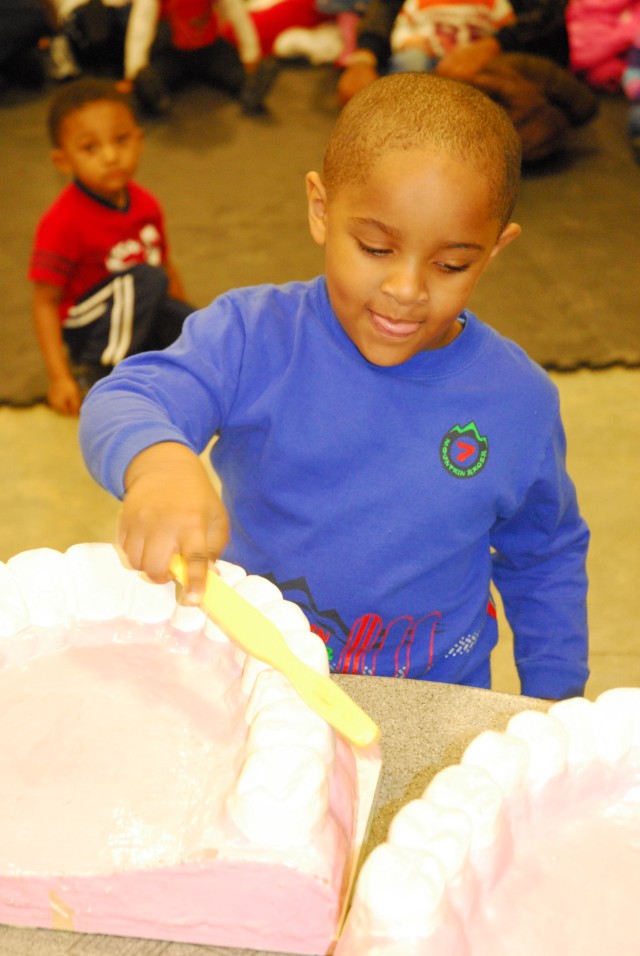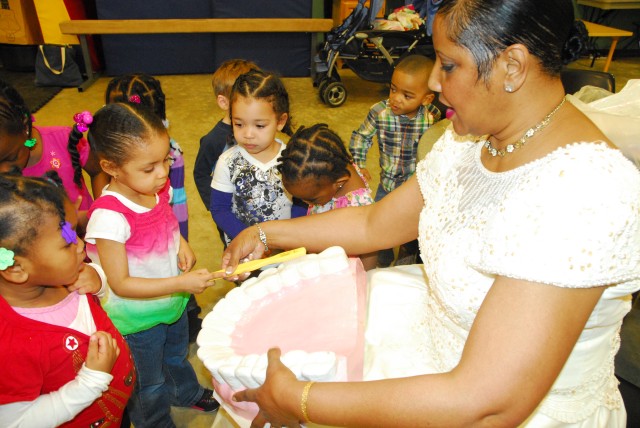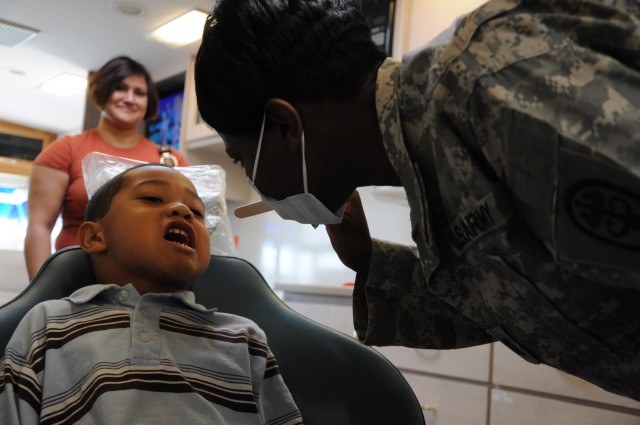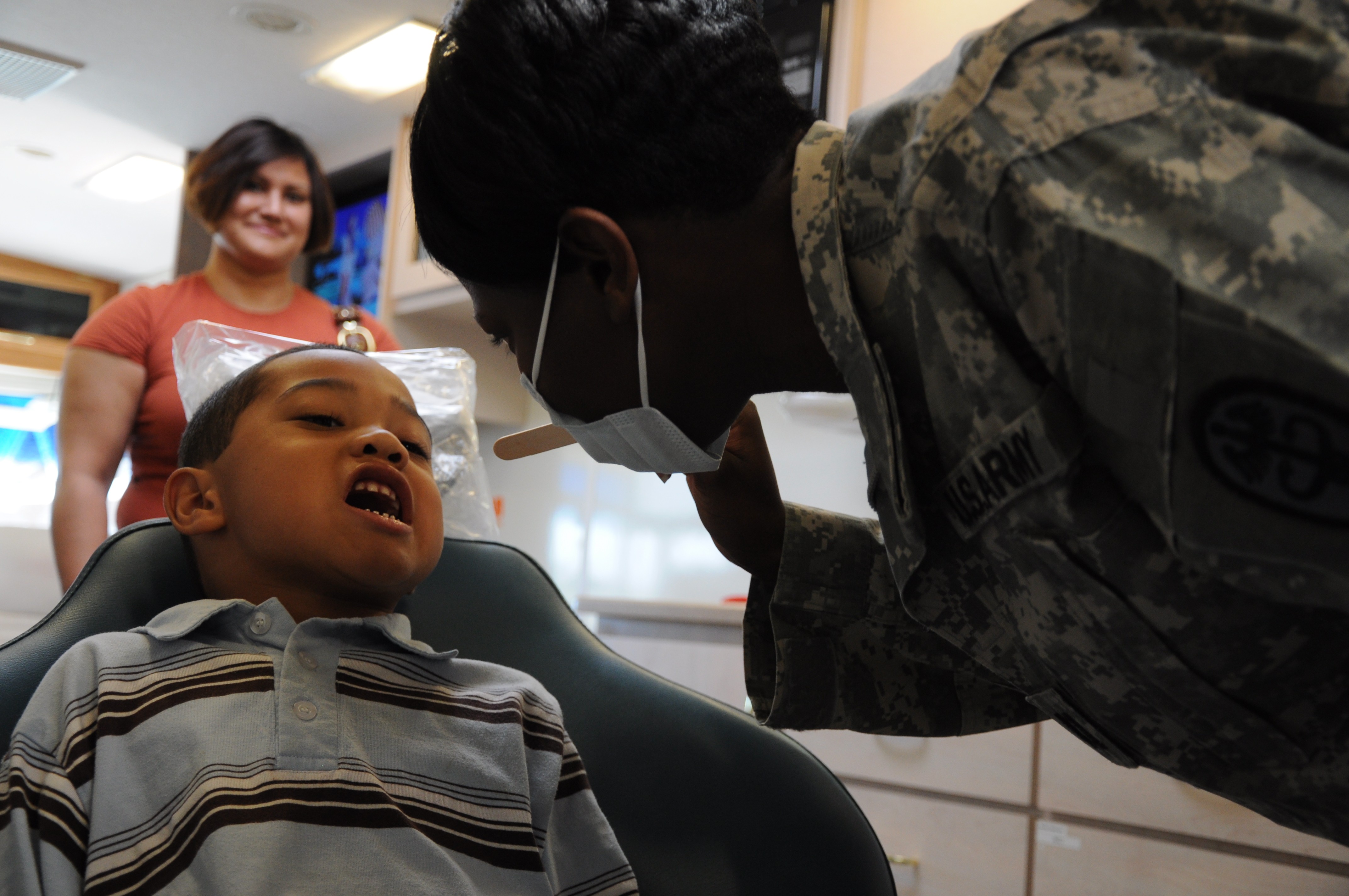FORT JACKSON, S.C. -- Fort Jackson's very own Tooth Fairy has taken flight the last few weeks, visiting the post's various Child Development Centers and homes to teach children about proper oral hygiene.
On her days "off," the Tooth Fairy, Cynthia Good, is a dental therapy assistant at the Caldwell Dental Clinic.
Her task, she said, is "to promote and give the kids instruction on how to take care of their teeth. We're trying to get them introduced to home (dental) care as soon as possible."
Good focuses on children, 2 to 5.
"A lot of the kids have no knowledge of how to brush and floss," Good said.
According to the Centers for Disease Control and Prevention, caries - the disease that results in cavities - is most likely the most prevalent infectious disease in U.S. children. More than 40 percent of children have had caries by the time they reach kindergarten.
So how can parents help prevent cavities in infants and toddlers' Here are a few tips for infants and toddlers.
A-A A+- Begin oral hygiene measures by the time the first tooth erupts. Be sure to clean infants' teeth and gums twice a day with a fluoride toothpaste and a washcloth or soft, age-appropriate sized toothbrush. Children younger than 2 should use a "smear" of toothpaste, while those 2 to 5 should use a pea-size amount.
A-A A+- Initiate flossing when adjacent tooth surfaces cannot be cleansed with a toothbrush.
A-A A+- Infants should receive oral health risk assessments from the primary health care provider by 6 months. The child's first dental visit should be by 6 months or after the first tooth erupts.
A-A A+- Parents or caregivers should establish a regular dentist for infants by 1 year.
Good stresses that although the children do learn to brush their own teeth, it is important that parents assist them and make sure the children's teeth are brushed properly.
"Parents need to go in there and go back over (what they've brushed)," she said.






Social Sharing